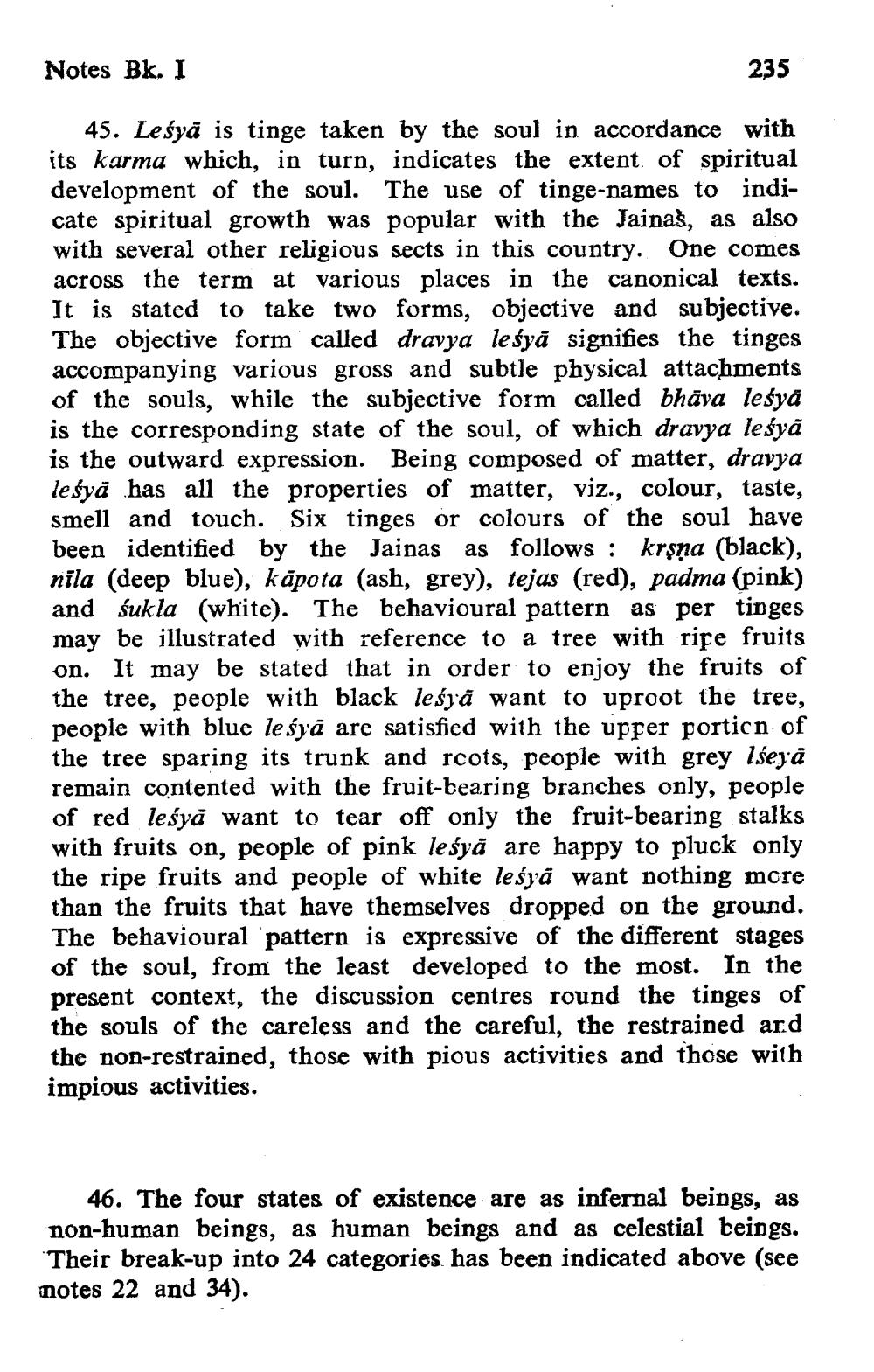________________
Notes Bk. I
235
45. Leśyā is tinge taken by the soul in accordance with its karma which, in turn, indicates the extent of spiritual development of the soul. The use of tinge-names to indicate spiritual growth was popular with the Jainaš, as also with several other religious sects in this country. One comes across the term at various places in the canonical texts. It is stated to take two forms, objective and subjective. The objective form called dravya leśyā signifies the tinges accompanying various gross and subtle physical attachments of the souls, while the subjective form called bhāva leśyā is the corresponding state of the soul, of which dravya leśyā is the outward expression. Being composed of matter, dravya leśyā has all the properties of matter, viz., colour, taste, smell and touch. Six tinges or colours of the soul have been identified by the Jainas as follows : krşņa (black), nila (deep blue), kāpota (ash, grey), tejas (red), padma (pink) and śukla (white). The behavioural pattern as per tinges may be illustrated with reference to a tree with ripe fruits on. It may be stated that in order to enjoy the fruits of the tree, people with black leśyā want to uproot the tree, people with blue le syā are satisfied with the upper portion of the tree sparing its trunk and roots, people with grey lśejā remain contented with the fruit-bearing branches only, people of red leśyā want to tear off only the fruit-bearing stalks with fruits on, people of pink leśyā are happy to pluck only the ripe fruits and people of white leśyā want nothing more than the fruits that have themselves dropped on the ground. The behavioural pattern is expressive of the different stages of the soul, from the least developed to the most. In the present context, the discussion centres round the tinges of the souls of the careless and the careful, the restrained ard the non-restrained, those with pious activities and those with impious activities.
46. The four states of existence are as infernal beings, as non-human beings, as human beings and as celestial beings. Their break-up into 24 categories has been indicated above (see notes 22 and 34).




